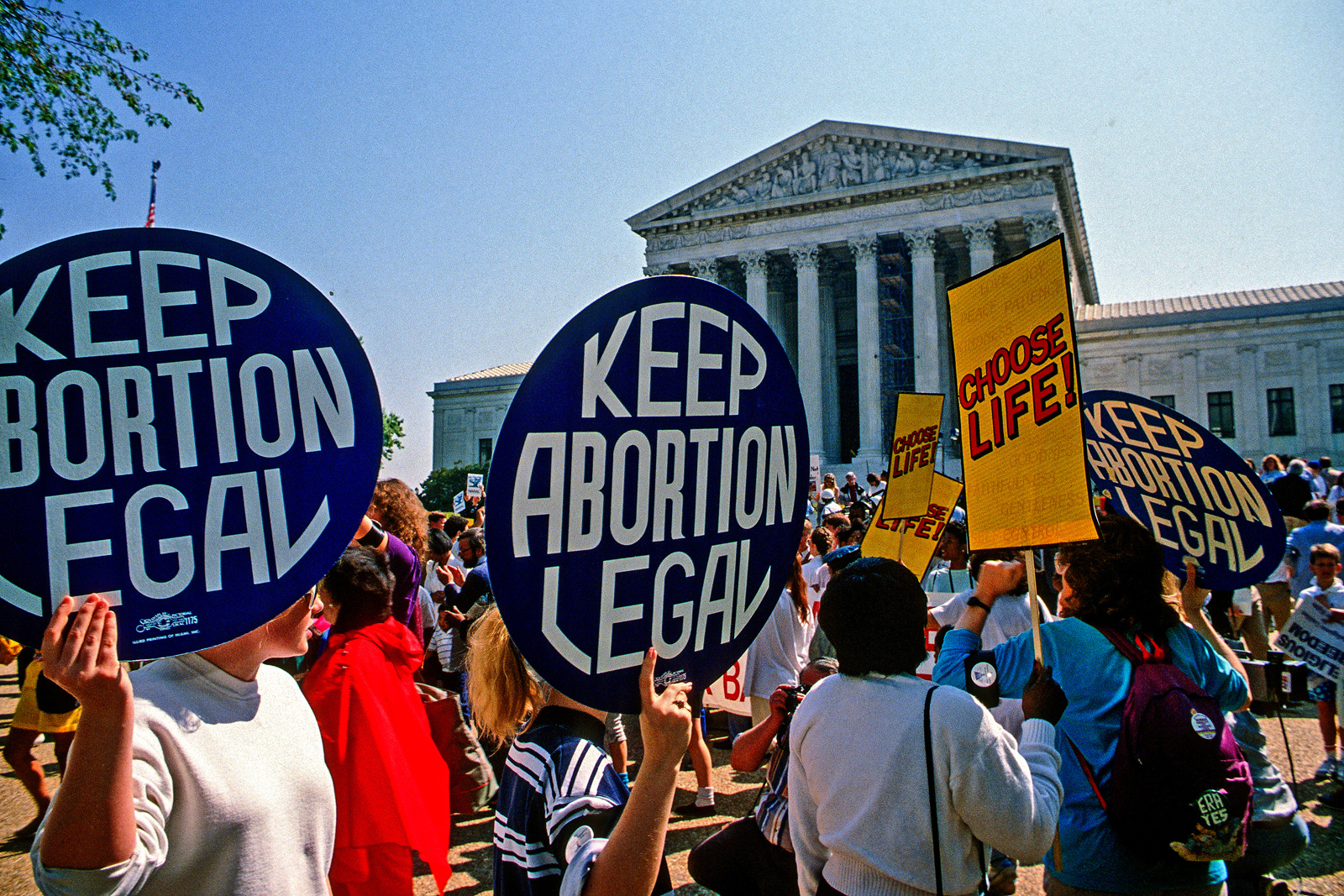No “State” shall “deprive any person of life, liberty, or property without due process of law” reads the Fourteenth Amendment of the Constitution. Over the decades, the Supreme Court has interpreted this clause broadly to protect “liberty” that isn’t explicitly mentioned in the Constitution. In the mid to late 1900s, the Court found a right to privacy implicit in the structure of the Constitution in portions of the Bill of Rights. Those rights included in the Fourteenth Amendment and the Bill of Rights were the basis for Roe v. Wade.
In 1973, the Court, in Roe v. Wade, cited that the right to privacy and its prior precedents hold that states can’t ban abortion before fetal viability—when the fetus is capable of life outside the womb. Before that point, Roe held, abortion is a fundamental right; allthough after viability, abortion can be banned in certain circumstances.
Typically under the Fourteenth Amendment, when a fundamental right is recognized, any law placing a restriction or outright ban on the right receives the most thorough judicial scrutiny, known as “strict scrutiny.” Under strict scrutiny, there must be a compelling state interest for the law imposing the regulation or ban. There also has to be narrow tailoring so that the law only reaches the state’s compelling interests and doesn’t go any farther. In Roe, anti-abortion laws violated strict scrutiny. Antiabortion laws at the time violated the strictest scrutiny, which meant that almost all abortion laws were to be held unconstitutional, at least or especially all of those before viability.
Has Roe Been Challenged?
In 1992, the Supreme Court heard a significant challenge to Roe. That case, Planned Parenthood v. Casey, came after several members of the Roe majority had retired and been replaced by more conservative Justices . . . sound familiar?
Despite the new majority, in 1992, the Court maintained the core holding of Roe—that abortion is a fundamental right before viability. Although, instead of a right to privacy, the Court held the right to bodily autonomy. However, in the controlling decision, the Court replaced the strict scrutiny test with the “undue burden” test. That compromise allowed states to impose more significant restrictions on abortion than Roe had previously allowed.
There were two additional developments following Planned Parenthood v. Casey.
In 2016, the Court decided on Whole Woman’s Health v. Hellerstedt. The Court decided that under the undue burden standard, “courts [should] consider the burdens a law imposes on abortion access together with the benefits those laws” grant.
In 2020, the Court took on June Medical Services v. Russo. The case was from Louisiana and involved an identical law to the one at issue in Whole Woman’s Health v. Hellerstedt. But in the Louisiana case, four Justices upheld Hellerstedt’s reading of the undue burden standard, while four voted to uphold the law at issue. Chief Justice Roberts voted to strike down the law, which allows more regulation by the states. This outcome was only possible because the Court had several new conservative Justices nominated by the 45th president and confirmed by the Senate.
The Court wasn’t able to change the direction of the right to abortion even with conservative Justices Scalia and Kennedy on the Court. The Supreme Court is now composed of even more conservative Justices, nominated by a president who didn’t win the popular vote, and we are seeing similar challenges to civil rights cases like Roe v. Wade pop up around the country and succeed.
Only time will tell if this new conservative majority will throw out decades of precedent to make good on their promise to end abortion. Here’s what you can do in the meantime: Follow the news and join community efforts that apply pressure on your elected officials for abortion and reproductive rights to be codified in law, not just protected by a Supreme Court case. With enough people speaking out, our will undoubtedly will prevail.


